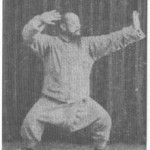 When we watch groups of tai chi students practicing in the park most of us wonder how such slow gentle movements can possibly have any effect on us, besides being a waste of time. But during the last 3 decades the medical and medical research communities have discovered that these apparently useless movements are actually extremely therapeutic. A 2006 study conducted at Harvard, reported in the May 2009 issue of Harvard Women's Health Watch, found that tai chi was a nearly perfect form of exercise because it can be safely practiced by students at nearly any age.
When we watch groups of tai chi students practicing in the park most of us wonder how such slow gentle movements can possibly have any effect on us, besides being a waste of time. But during the last 3 decades the medical and medical research communities have discovered that these apparently useless movements are actually extremely therapeutic. A 2006 study conducted at Harvard, reported in the May 2009 issue of Harvard Women's Health Watch, found that tai chi was a nearly perfect form of exercise because it can be safely practiced by students at nearly any age.
The slow and gentle movements are able to address some of the most basic parts of complete fitness such as strength, balance, flexibility and aerobic conditioning. The report concluded that when tai chi is used in combination with traditional treatments the exercises are extremely effective in treating following disorders:
- Parkinson's disease. Patients with "mild to moderately severe symptoms showed walking ability, improved balance, and overall well-being after 20 tai chi sessions.
- Arthritis. A single one hour weekly session for 12 weeks has been shown to reduce pain and improve physical functioning more than simple stretching exercises.
- Low bone density in post menopausal woman, which leads to osteoporosis, can be controlled and even prevented by regular tai chi practice.
- Breast Cancer itself cannot be treated by regular practice improves functional capacity and reduces discomfort from treatment regimens such as chemotherapy.
- Heart disease is treated by lowering blood pressure and cholesterol triglycerides and increasing insulin and C-reactive protein levels.
The question remains however about how tai chi is able to accomplish so much with apparently little physical effort. Finding the answer is simple if you only know where to look. The difference between Western and Eastern medical thought are studies in contrasts. The Western thought is to treat medical conditions from the outside in and in the East the process is reversed, treating problems from the inside out.
Tai chi begins with establishing a meditative attitude, directing the mind's attention inward, directing it away from distractions. Once a meditative state has been achieved students learn to control their breathing, focusing the thoughts on keeping it even and smooth. These first two steps alone will help treat problems such as depression and anxiety, both of which are heavy contributors of bad health. The next step is to begin to learn movement sets, moving through routines while maintaining focus but splitting it between our breathing and the movements themselves, keeping our breaths in harmony with the movements.
